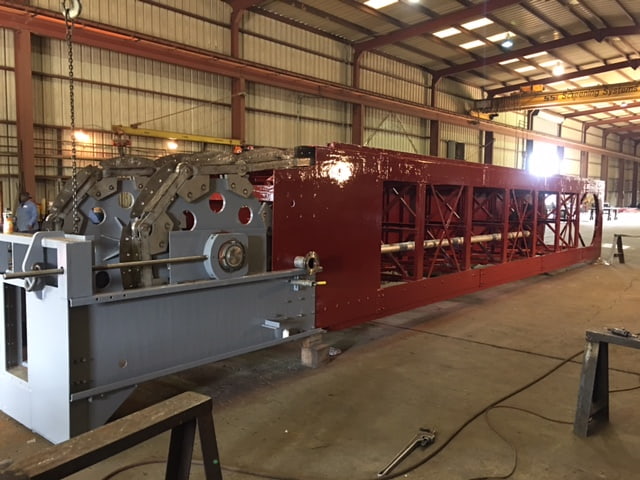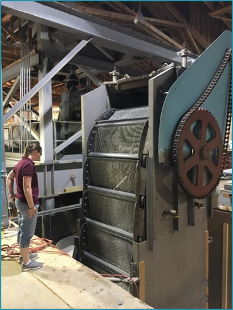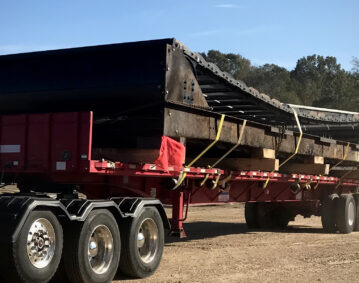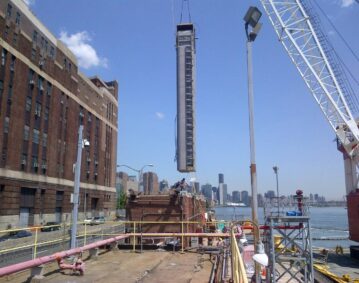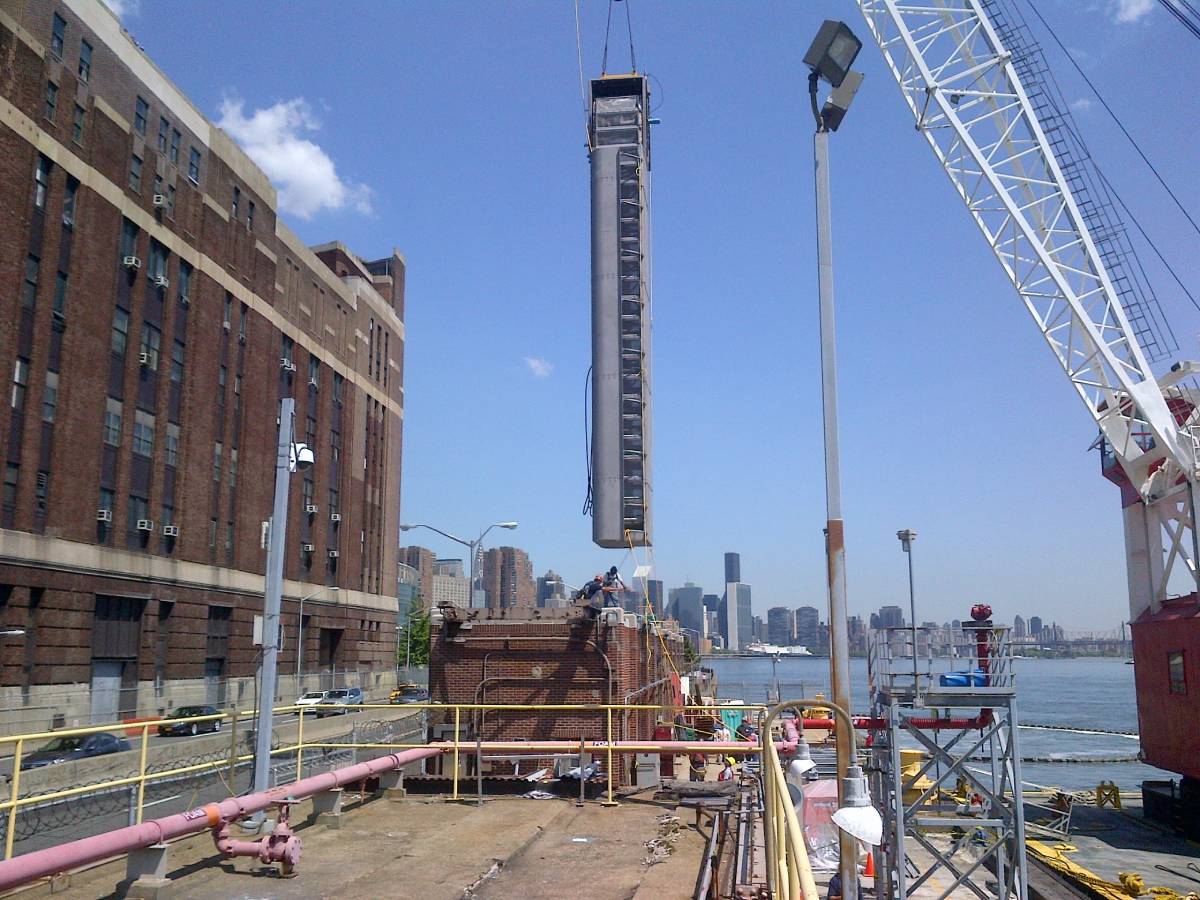By Gary Thorn, Section Manager, Con Edison Steam Plant Projects and Ford Wall, VP of Sales, Atlas-SSI
High concentrations of river debris overwhelmed 316(b)-compliant intake screens at the East River Generating Station in New York city during severe storms in 2014 and 2015, causing irreparable damage to two recently installed screens. In both cases, it appeared that the surge of debris quickly blocked the 0.6 mm fine mesh screens and the differential rose beyond the maximum design static differential of eight feet, even though the screens were operating at their top speed, the system was unable to clear the rapidly accumulating debris. Within a short period of time, the weight of the material and the force of the water caused the screens to collapse.
Consolidated Edison and screen supplier Atlas-SSI worked together to understand the root cause and to make repairs and modifications to the protective control systems. The objectives were focused on implementing changes and upgrades that would prevent a similar situation from re-occurring and also to enable the plant to remain in compliance with the New York State Department of Environmental Conservation (NYSDEC) State Pollution Discharge Elimination System (SPDES) Permit Programs. NYSDEC is the lead agency that ensures EPA 316(b) regulations are met or exceeded in New York. As part of that effort, they teamed up with the Electric Power Research Institute (EPRI) and Alden Labs to conduct a thorough study of the intake hydraulics, loading to the screens and screen operation—with and without the 0.6 mm fine mesh screen overlays required by the 316(b) regulation.
What they found impacted several design and operational aspects of the plant’s intakes and screens, but also enabled investigators to make a remarkable conclusion.
0.6 mm fine mesh screen overlays were not necessary for the East River Generating Station to comply with entrainment exclusion requirements set by the NYSDEC and EPA 316(b) rule.
Those startling findings enabled the East River Generating Station to be exempted from the requirement for 0.6 mm fine mesh screens and could also potentially impact the way many power plants and utilities throughout the USA can configure and operate water intake screens.
Recent upgrades to screens and intakes focused on achieving NYSDEC SPDES & 316(b) compliance
About a year before the first screen was damaged, Atlas-SSI completed a comprehensive upgrade of the entire screening system at the plant to prepare it for the incoming regulation. This turn-key system included a site assessment, equipment design, manufacturing and technical support for the installation of five new Modified Ristroph Fish Handling Dual Flow Traveling Water Screens. The project scope also included new spray wash pumps, piping, sluice gates, actuator valves, fish return troughs and a control house.
The screens, pumps and other equipment were selected as the best technology available (BAT) following a competitive bidding process that evaluated several alternatives against economic and operational criteria such as cost, reliability, ease of operation and maintenance, energy consumption and others.
Major changes were made to the screen wash system to achieve the low-pressure spray specified by the regulations to gently remove fish from the screens, while also providing sufficient water volume to effectively wash away debris. Atlas-SSI provided larger pumps, valves and spray headers to produce 10 times the water supply to the wash system, increasing it from about 30 gal/min (GPM) to 300 GPM.
A large sluice gate was also installed in a separate intake bay to provide an emergency release mechanism during periods of extremely high differentials. This design provided significant cost savings since it eliminated the need to install release gates in each traveling screen.
And finally, to ensure that the traveling water screens were in compliance with the regulations, 0.6 mm mesh overlays were supplied that would need to be installed during specific seasonal spawning periods. As a result, the fine mesh screen overlays would have to be installed or removed at least twice per year.
Assessing the need for 0.6 mm fine mesh screens
To evaluate the performance, operational impact, and the necessity of the fine mesh screens, Con Edison Section Manager Gary Thorn commissioned two studies for the plant.
The first study, supported by EPRI and completed by ASA Analysis & Communications, used computational fluid dynamics (CFD) to model the flow and velocity changes through the screens with and without the fine mesh overlays. The study also attempted to quantify the loading on the screens during the storm events and replicate the differential measurements that had been experienced during the storm events. The results helped engineers and operators make changes to the control systems of the intake hydraulics and identified how the sluice gate operation can be modified to better protect the screens and prevent failures from debris and high water.
The CFD study also looked at the way intake flow may have contributed to microbiologically influenced corrosion (MIC). Close inspection of the damaged screens revealed MIC in the structural components, despite the relatively short service time. The CFD study corroborated that flow patterns may have caused sediment deposits that led to MIC. To ensure the highest level of protection for the new screens, Atlas-SSI applied an advanced epoxy coating to their stainless-steel structural components.

